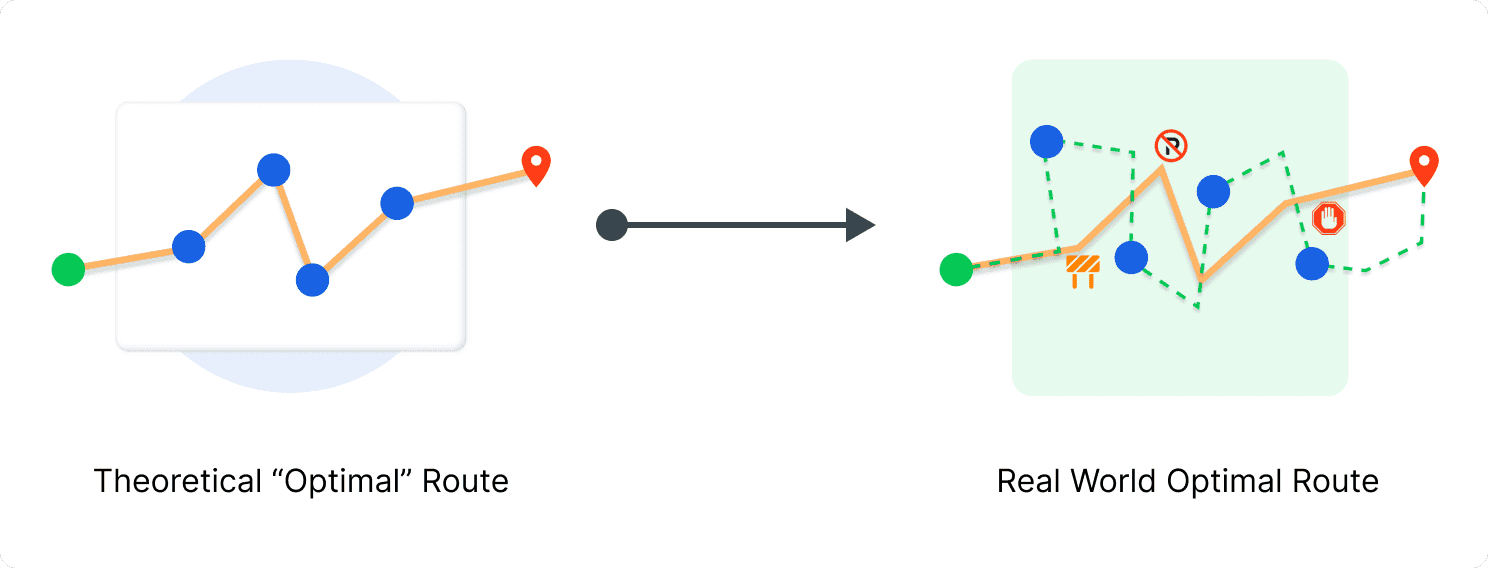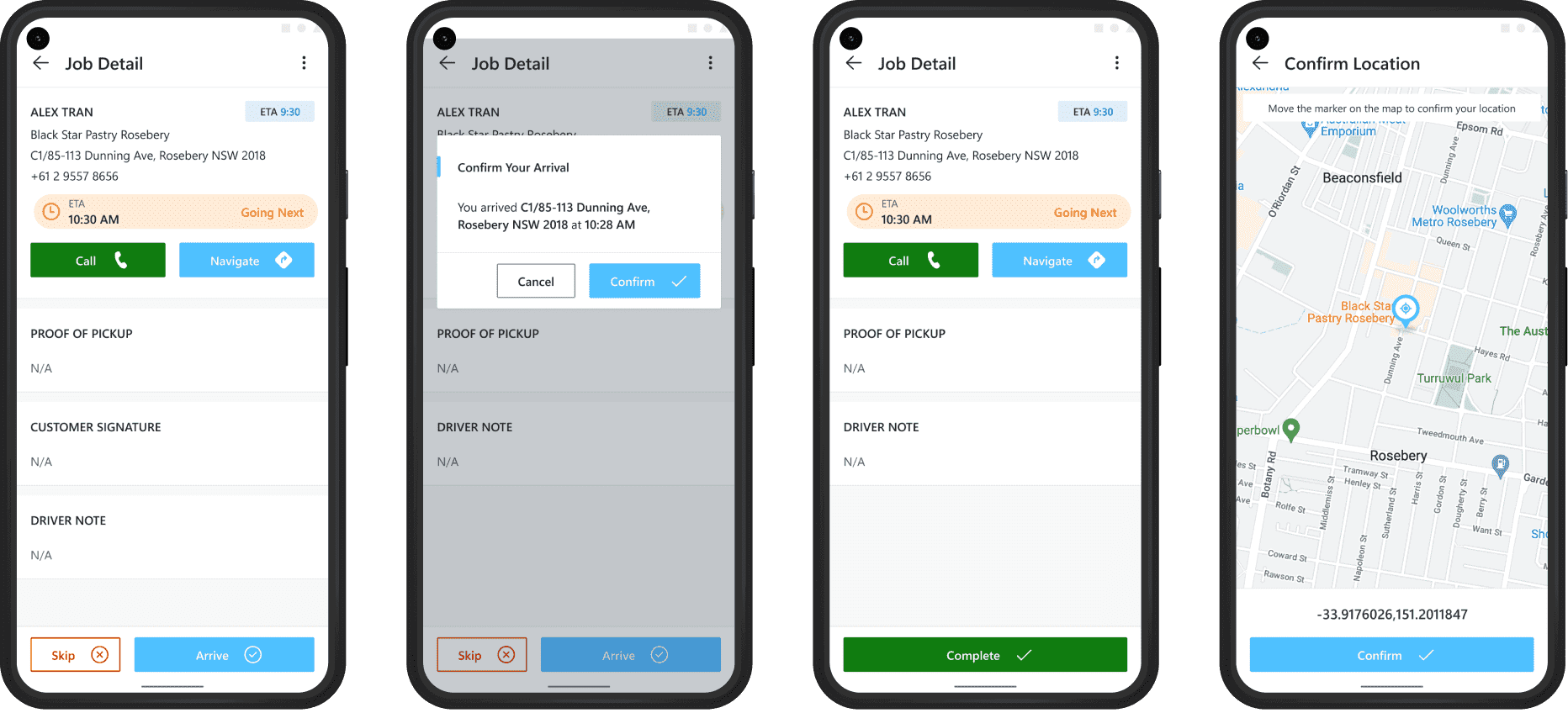The first technical problem that needed to be solved was figuring out a frictionless but secure way for drivers to log into the app and view routes that they’ve been assigned to. Working together with Adiona’s product and engineering teams, here’s what we came up with.
Drivers are added to the Adiona dashboard using their email addresses.
When a driver opens the driver app for the first time, he’s prompted to enter his email address.
An email is sent to him with a magic link. The link contains an invitation code that is exchanged by the app for a secure token that authenticates his login. When he clicks that link, it automatically opens the Adiona app and logs him in so he can view his routes.
Adiona faced a second challenge which involved collecting adequate location data to enhance the quality of the routes generated on their platform by machine learning algorithms over time.
The issue with traditional route optimization algorithms is that they optimize the sequence of deliveries to minimize the total distance covered by the vehicle fleet, which often conflicts with the preferred routes of drivers. This occurs due to the disparity between real-world drop-off locations and the shipping addresses provided by customers.
Additionally, drivers tend to use familiar routes, which may not always be the quickest way to travel from one point to another, but rather considers local traffic conditions, road closures, and parking restrictions.
To overcome this problem, we implemented foreground in-app location tracking that sends the real-time GPS position of the driver to Adiona's servers at 30-second intervals. If the app loses internet connectivity, it would save location data locally on the device and send it to the servers once the internet connection was restored.
The app also verifies the driver's location upon their arrival, which is then fed back to Adiona. This information helps to improve the accuracy of the delivery address and confirm that the driver delivered the package to the right location, thereby minimizing errors.
After resolving these technical challenges, our focus shifted towards improving the Adiona driver app to match other routing and delivery management solutions.
We made sure that drivers could easily access all the necessary information for each delivery and added the feature of sending text notifications to customers informing them of their delivery prior to the driver's arrival.
The text message sent to customers included a real-time tracking link that utilizes the driver app's location tracking feature. This allowed customers to track the driver's location and prepare to receive their delivery in person. Once the delivery is confirmed, the customer can sign for it on the driver app.
In cases where the customer is not available, the driver can leave the package at their front door and take a photo as proof of delivery. This photo is then immediately uploaded to the Adiona platform.
In Richard’s view, the new driver app will be a game-changer for Adiona and its customers.
“It will help our users innovate, save money, and deliver a better experience to their drivers and customers. By making it easy for drivers to follow the optimized routes generated by our platform, we are surely going to lower the impact transport and logistics have on our cities and their people.”





